Featured Comment:
“I just did it and ate it. 👍🍲 It is killer…it’s deadly…SO SO SO DELICIOUS…😋 OISHĪ ‼️ ARIGATO GOZAIMASHITA 🙂🔥🇯🇵💓❣️”
– @nickykochka (from Instagram)
What is Curry Udon?
Curry udon is a soupy noodle dish made with chunky Japanese udon (wheat noodles) served in a thick, glossy curry-flavored dashi soup. You could say that it’s a dish where Indian spice meets Japanese noodles, and it’s a surprisingly amazing combination!
While most traditional udon dishes are served in a light and thin broth, curry udon is basically on another level. The base of the broth is essentially the same (made with dashi, soy sauce, and mirin). However, curry udon is thick, spicy, and filling. Regular udon dishes feel quite humble, whereas curry udon feels rich and decadent.
Curry udon contains meat (most commonly pork) and can be customized with a wide variety of vegetables. However, you could easily make this a vegetarian dish by using vegan/vegetarian dashi and switching the pork out for a meat-free alternative!
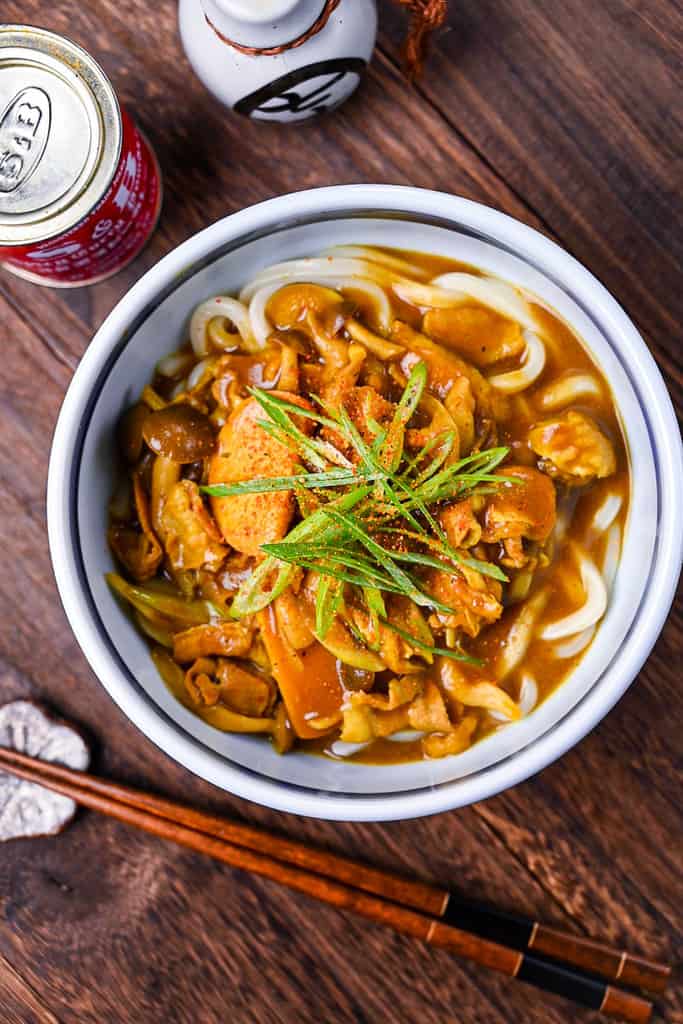

How I Developed This Recipe
It’s pretty common in Japan to use a store-bought roux when making curry udon at home because it’s convenient. However, making this dish from scratch is quite doable and can be even more rewarding!
With this in mind, I came up with a recipe that makes it simple to make authentic curry udon, so anyone can prepare it in their own kitchen.
Curry udon is a great choice when you’re looking for something comforting on a cold winter’s day. The spicy curry and chewy udon make for a satisfying meal that warms you from the inside out!
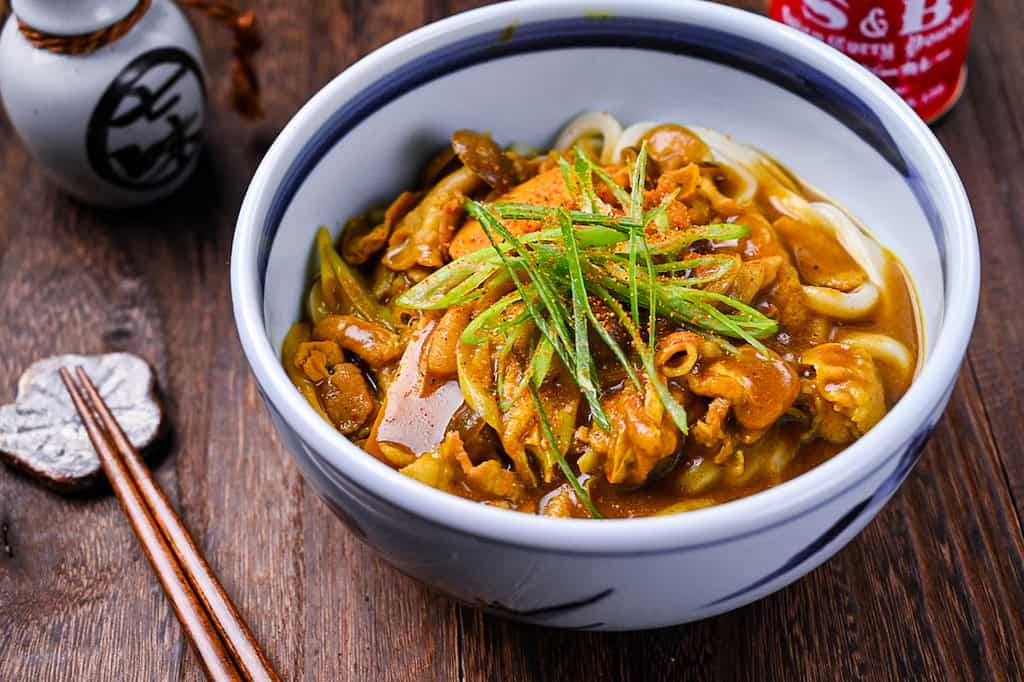
Ingredients & Substitution Ideas
- Udon Noodles: You can choose from pre-boiled (fresh), dried, or frozen varieties for convenience. If you’re looking for a fun weekend project with amazing results, try my homemade udon noodle recipe!
- Dashi Broth: I’ve put together a few of my favorite dashi recipes for you to choose from. You’ve got the classic awase dashi (kombu and bonito flakes) and a vegan version (using kombu and shiitake mushrooms). If you’re short on time, Quality dashi packets are great shortcuts for busy cooks.
- Soy Sauce: or detailed brand recommendations and a guide to different types of soy sauce, check out my comprehensive soy sauce guide on the blog.
- Mirin: If you want the most authentic taste, look for “hon mirin” (本みりん).
- Sugar: While regular white sugar works just fine, I prefer light brown cane sugar.
- Curry Powder: We’re using Japanese-style curry powder mix here, which has a unique blend of spices. Curious about its components? For more details, check out my Japanese-style curry powder mix post! If you can’t find it, don’t worry—your favorite curry powder blend will still create a delicious result.
- Potato Starch: If you don’t have potato starch on hand, cornstarch or tapioca starch are great substitutes.
- Thinly Sliced Pork Belly: For a leaner option, thinly sliced beef or chicken thigh work beautifully too. Vegetarians can skip this and double up on mushrooms or add extra tofu for protein.
- Toppings: I chose green onions, shimeji mushrooms, kamaboko (Japanese fish cake), and tofu pouch (aburaage).
The main vegetables in this dish are spring onions and shimeji mushrooms, but you can also add other vegetables to make it more to your taste. Here are some ideas:
- Yellow/white onion
- Any kind of mushrooms
- Carrots
- Snow peas
- Eggplant
- Zucchini
- Bell Peppers
- Baby Corn
If you’re adding other vegetables, make sure you add them early to ensure they’re properly cooked. If using white onion, I’d recommend sautéing them before sealing the meat to make them soft.
Jump to Full Recipe MeasurementsVisual Walkthrough & Tips
Here are my step-by-step instructions for how to make Japanese Curry Udon at home. For ingredient quantities and simplified instructions, scroll down for the Printable Recipe Card below.
If you prefer to watch the process in action, check out my YouTube video of this recipe for a complete visual walkthrough!
For the best flavor and texture, brown your meat first. I used thinly sliced pork belly, which is most common for curry udon in Japan, but you could also use beef or chicken if you prefer.
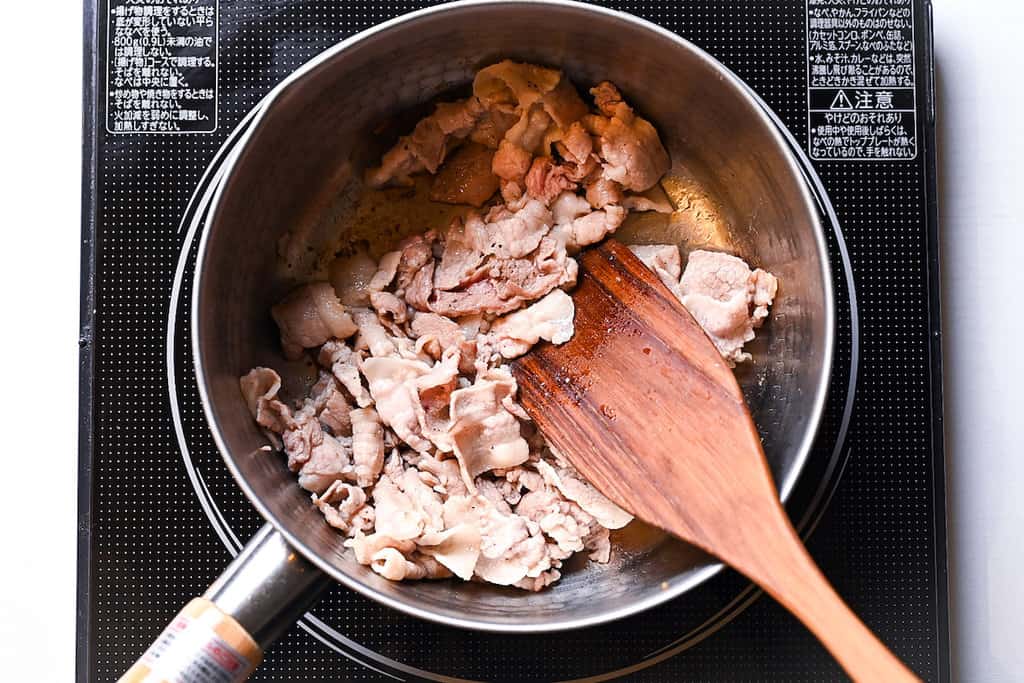
This step also helps render the fat in the meat will add more flavor to your broth!
Once the meat is sealed, add the dashi, soy sauce, mirin and sugar to the pot.

Bring it to a boil over medium heat and then lower the heat to a simmer.
Okay, the term “paste” is used loosely here. Basically, I made a curry-flavoured slurry which will not only help the curry powder distribute evenly throughout the broth without lumps but also thicken the broth to give it a true “Japanese curry udon” consistency!
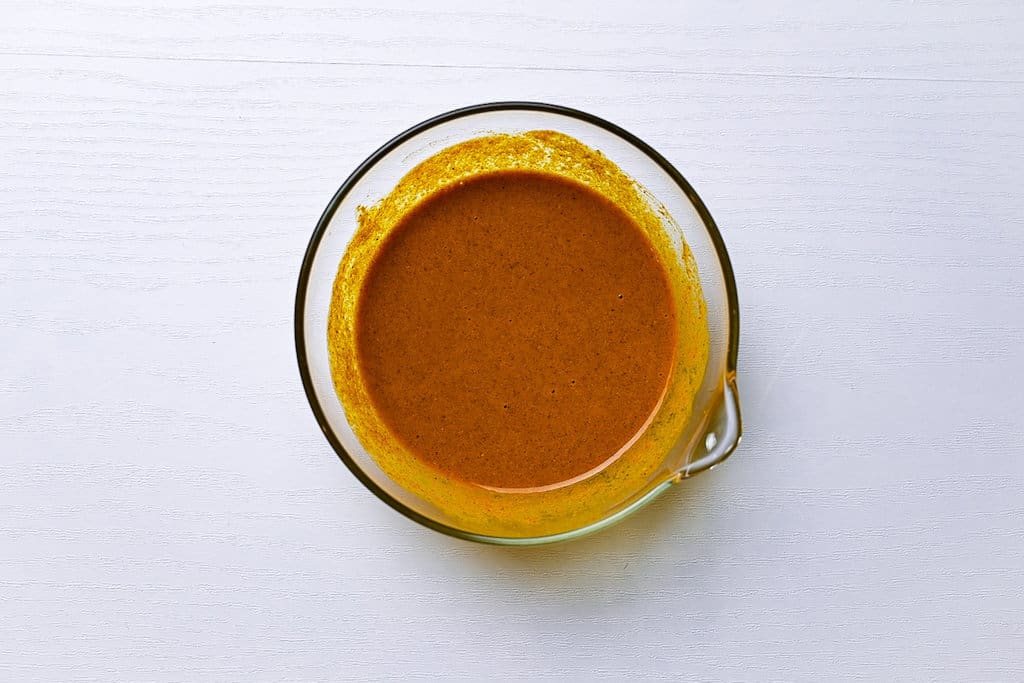
Whisk the curry powder, potato starch, and cold water in a small bowl until smooth. The consistency should be similar to pancake batter. If it’s too thick then feel free to add a little more water.
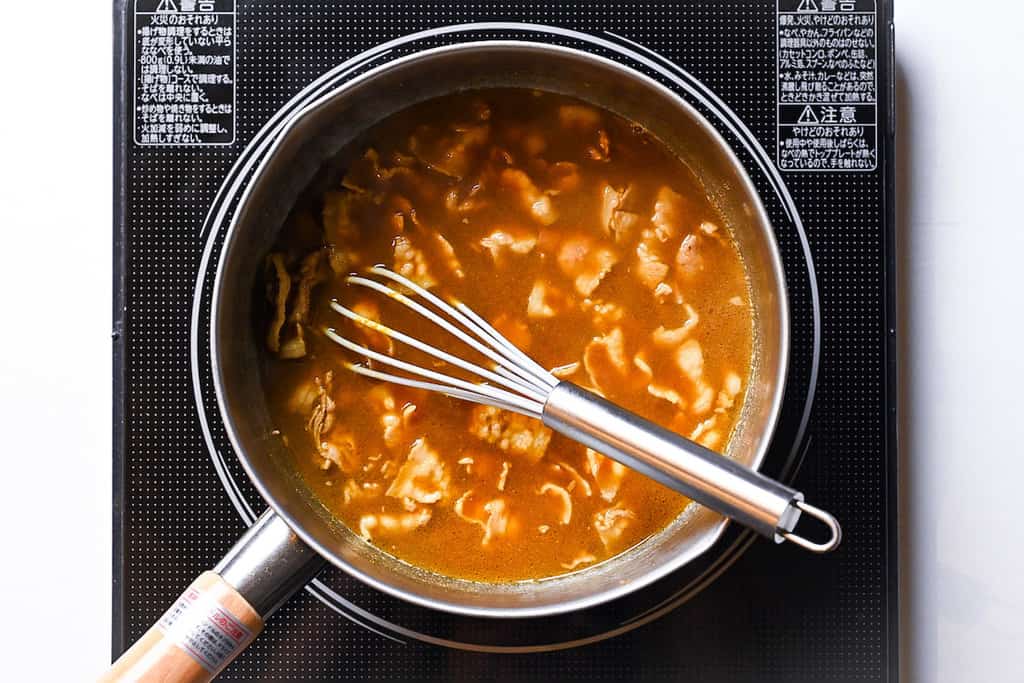
Pour the curry mixture into the broth and mix it well. I used a whisk to make sure it was thoroughly mixed into the soup.
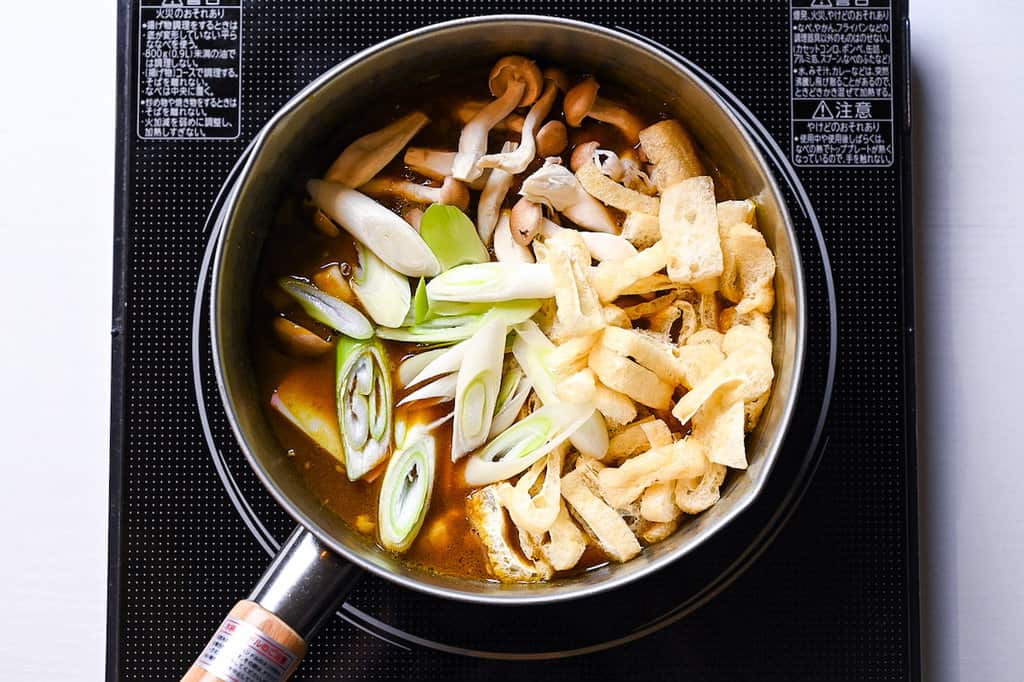
Add the rest of the ingredients to the pot. In this recipe, I use spring onion, shimeji mushrooms, kamaboko (a Japanese fish cake commonly used in udon dishes), and aburaage (tofu pouch). For more ingredient ideas, check the substitutions below!
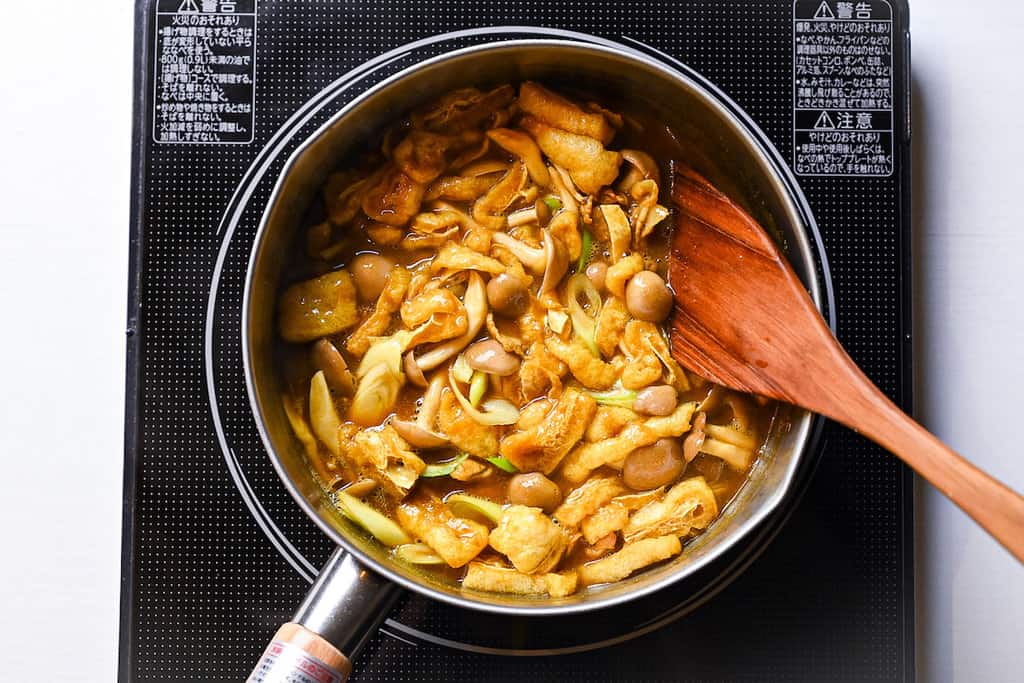
Simmer on a low heat without a lid for about 15 minutes. Mix from time to time to ensure even cooking.
While the soup is simmering, cook your udon noodles in a separate pot. This ensures that the noodles’ starch doesn’t make the soup too thick or floury.
Once cooked, drain the water by pouring it into a colander and rinse with freshly boiled water for the best results.
Transfer the cooked udon to serving bowls and pour the soup over the top. Garnish with thinly sliced spring onions and a sprinkle of shichimi chili pepper.
Jump to Full Recipe Measurements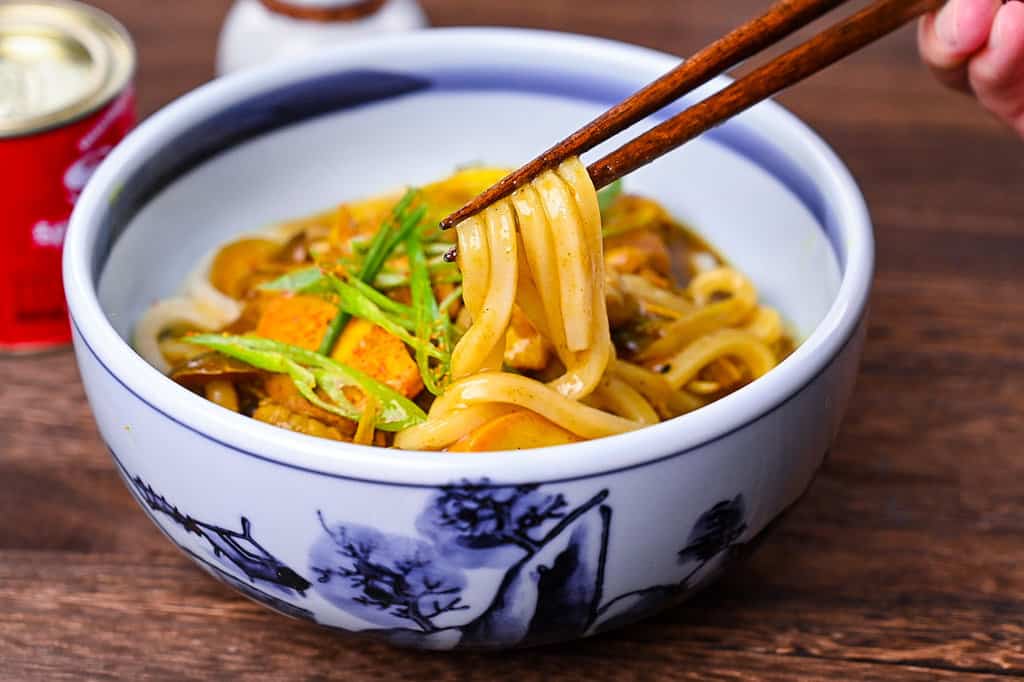
I hope you enjoy this Curry Udon recipe! If you try it out, I’d really appreciate it if you could spare a moment to let me know what you thought by giving a review and star rating in the comments below. It’s also helpful to share any adjustments you made to the recipe with our other readers. Thank you!
More Japanese Udon Recipes
- Beef Udon Noodle Soup (Niku Udon)
- Kitsune Udon (Udon Noodles with Deep Fried Tofu)
- Chicken Yaki Udon (Garlic & Butter Soy Sauce Fried Noodles)
- Zaru Udon (Cold Udon with Homemade Dipping Sauce)
You can also check more authentic Japanese udon recipes here!
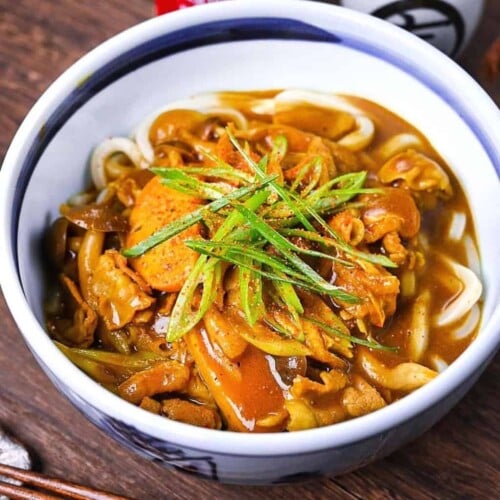
Japanese Curry Udon
Ingredients
Broth
- 500 ml dashi stock
- 3 tbsp Japanese soy sauce (koikuchi shoyu)
- 2 tbsp mirin
- 1 tsp sugar
- 3 tbsp Japanese style curry powder
- 1 tbsp potato starch (katakuriko) or corn starch
- 5 tbsp cold water
Curry Udon
- 1 tsp cooking oil
- 150 g thinly sliced pork belly
- 50 g Japanese leek (naganegi) diagonally sliced
- 50 g mushroom of your choice I usually use shiitake or shimeji
- 8 slices kamaboko fish cake optional
- 2 fried tofu pouch (aburaage) thinly sliced, optional
- 2 portions udon noodles
- finely chopped green onions to garnish
- Japanese chili powder (shichimi togarashi) optional garnish
Instructions
- Heat a large pot on medium. Add 1 tsp cooking oil and add 150 g thinly sliced pork belly. Fry until seared on both sides.

- Once the meat is seared, add 500 ml dashi stock to the pot with 3 tbsp Japanese soy sauce (koikuchi shoyu), 2 tbsp mirin and 1 tsp sugar. Mix and bring to a boil, once boiling lower the heat to a simmer.

- In a small bowl, mix 3 tbsp Japanese style curry powder and 1 tbsp potato starch (katakuriko). Once combined, add 5 tbsp cold water and mix it into a thin curry paste. (It have the thickness of pancake batter.)

- Pour the curry paste mixture to the pot and whisk to incorporate it into the broth.

- Add 50 g Japanese leek (naganegi) and 50 g mushroom of your choice to the pot. (You can also add 8 slices kamaboko fish cake and 2 fried tofu pouch (aburaage) here if you are using them.)

- Simmer for about 10 minutes or until thickened, stir occasionally.

- While the soup is simmering, cook 2 portions udon noodles in a separate pot following the instructions on the packaging. Once cooked, drain in a colander and rinse with freshly boiled water.

- Transfer the cooked udon to serving bowls and pour the curry soup over the top. Garnish with chopped spring onion and shichimi (Japanese chili pepper).

- Enjoy!
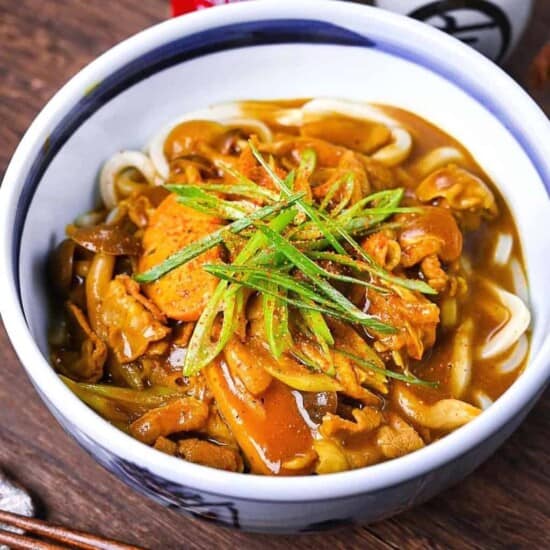




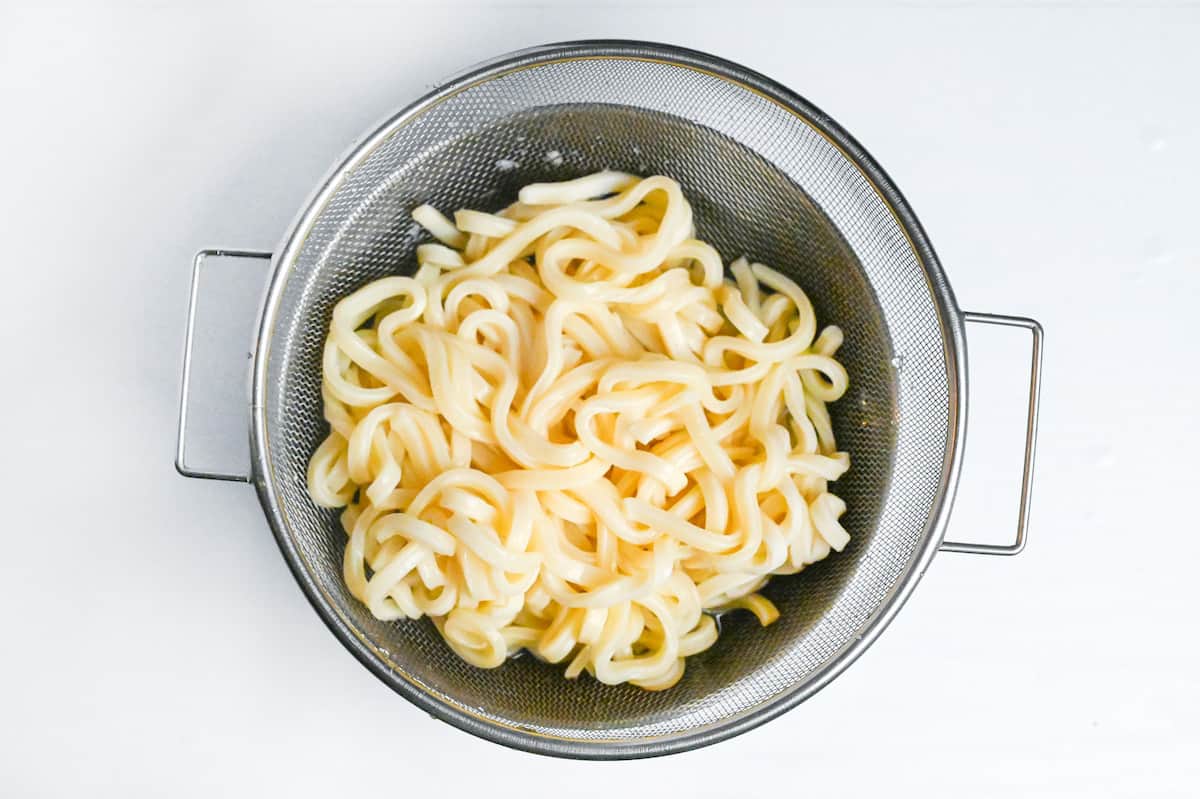
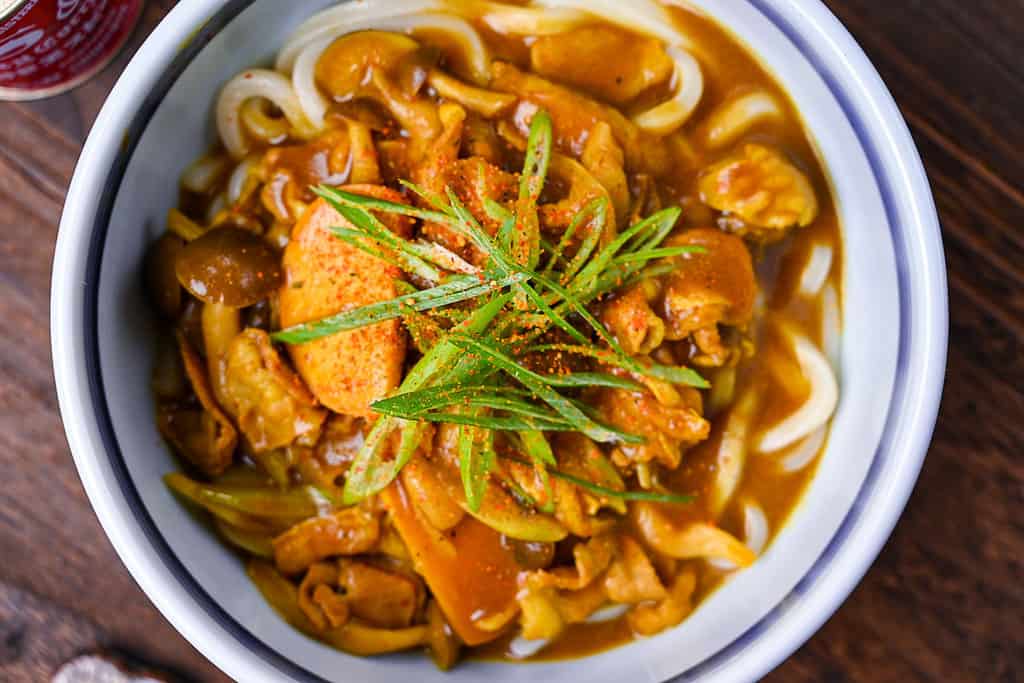
Very tasty curry udon – mom even had seconds! First time making it with dashi, mirin and pork belly. Will make this again.
Hi Christine,
Thank you so much for your comment! I’m so glad that you and your mum enjoyed it! 🙂
Yuto